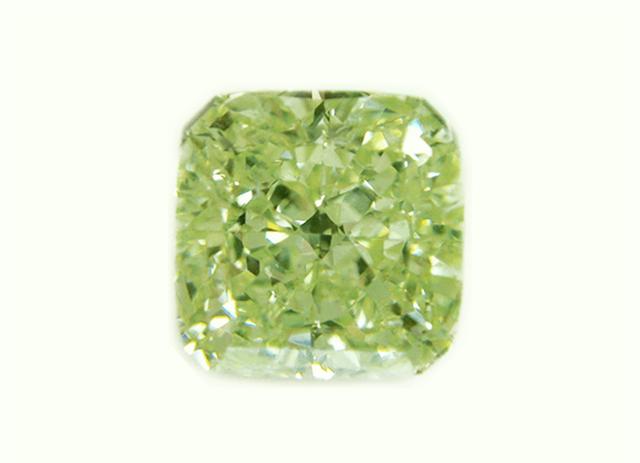
Green Diamonds
Any diamond with a green hue means it has spent a few million years being bombarded with a radioactive source. (Note that hydrogen may also be the cause in some yellowish-green stones.) The reason that a true green diamond is so valuable is that radiation does not usually affect the entire gem, meaning that the stone may be green only in patches or on the surface – their beauty is only skin deep. And as with all beauty, if it does not come from within, it disappears under the slightest of changes. With diamonds, this means the colour may disappear during the faceting process. If, however, the diamond has been through barrages of beta and gamma rays as well as neutrons, the chances are that its green beauty comes from within. In these rare instances, it will sparkle green regardless of the cutting and polishing. Most stones in the green family come from Brazil, Venezuela and Zimbabwe.
Green diamonds are among the rarest of all fancy colours. The most famous and largest natural green diamond is the 41 carat Dresden Green. The photo (below) shows the diamond set in a hat ornament that was created in 1768. The Dresden Green is an exceptional diamond, because its green colour is evenly distributed throughout the body of the stone. While most green diamonds owe their colour to surface “skins,” the Dresden is uniformly green.


Cause of Colour
Cause of colour in green diamonds is natural radiation, which creates an external skin or surface of green colour. It is uncommon for the green colour to reach deep within a diamond. Lab graders assess the natural colour of green diamonds by this skin. Irradiated green (Treated) diamonds are often found in the marketplace, so determining natural colour for value is key. Also note that sometimes labs are unable to conclusively determine the natural origin of green diamonds because the cause is radiation. So it is not unusual for a manufacturer to submit a rough diamond or partially polished diamond so that the lab can identify the natural cause of colour prior to completion of polishing.
Secondary Colours
Green is the colour between blue and yellow, so common secondary colours in green diamonds include bluish green and yellowish green, and if the colour is desaturated, grayish green or brownish green.
Rarity
Natural green diamonds are second to red diamonds as the world’s rarest fancy colour. True greens devoid of secondary hue are the most valuable among natural green diamonds.
Grading
Green diamonds are graded as Faint Green, Very Light Green, Light Green, Fancy Light Green, Fancy Green, Fancy Intense Green, Fancy Dark Green, Fancy Deep Green, and Fancy Vivid Green.
Prices
Despite the low demand, natural green diamonds remain strong in price. Because these stones are so rare and are in
‘strong hands’, downside price action is limited. There are few public sales. It is hard to track prices, but they are probably rising. A carat sized fancy green can wholesale for $60,000-$125,000 per carat. A carat size fancy intense green starts at $125,000 per carat. In 1999, a .90 carat fancy vivid green, VS clarity sold for over $730,000 per carat at auction.

